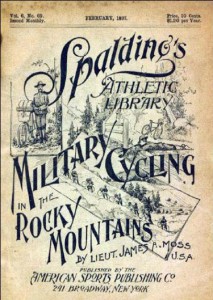In June of 1897, the all-Black company of the 25th Mobile Infantry, under the command of a white lieutenant and accompanied by a medic and a journalist, embarked on a journey across America’s heartland — from Fort Missoula, Montana, to St. Louis, Missouri — to “test most thoroughly the bicycle as a means of transportation for troops.”
Their trek would span 41 days and 1,900 miles and pit the men against sandhills, the Rocky Mountains, rain, snow, poison, and more. Decades before Dr. King had his famous dream, these men were sweating together, bleeding together, and biking together as a team.
Their trip proved two truths that we should hold self-evident today: 1) All men are created equal; 2) All men are nowhere near as tough as they were in 1897.

Gears Weren’t Invented Yet
Few people can grasp the physical anguish of traveling nearly 2,000 miles on a bike, save the few elite riders who train a lifetime to ride professional events like the Tour de France. The Tour did not exist in 1897, and neither did gears (the closest thing to blood doping was baking soda).
Not only were the men of the 25th infantry not elite riders, some of them had never so much as ridden a bike (not too surprising considering the bicycle chain had just been invented). Even still, each man pedaled or pushed his bike every inch of the 1,900 miles and did so without “granny gears.”
The Spalding Army Special Bicycle Was Insanely Heavy
Making any 2,000-mile trip by bicycle is impressive. The feat becomes superhuman if that bike weighs 55 pounds, which is exactly what the “Buffalo Soldiers” of the 25th were working with. The bike was 35 pounds of pure steel (the wheels alone were 6 pounds), then add on the Civil War-era tents, poles, change of clothes, toiletries, cooking and eating utensils, spare parts, rifle, and ammunition each man had to carry, and you’ve essentially got a rolling anvil. What’s more, the troop several times had to push these behemoths up the Continental Divide and carry them across rivers.










